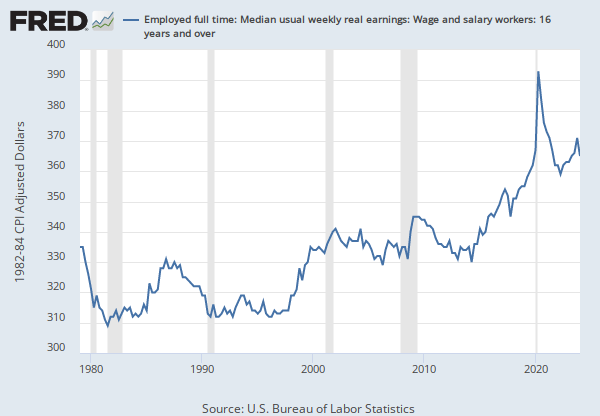Federal Reserve Economic Data
- Release Calendar
- FRED Tools
- FRED News
- FRED Blog
- About FRED
Data in this graph are copyrighted. Please review the copyright information in the series notes before sharing.
Notes
Source: U.S. Bureau of Labor Statistics
Release: Characteristics of Minimum Wage Workers
Units: Percent of Total Paid Hourly Rate, Not Seasonally Adjusted
Frequency: Annual
Notes:
Wage and salary workers are workers age 16 and older who receive wages, salaries, commissions, tips, payments in kind, or piece rates on their sole or principal job. This group includes employees in both the private and public sectors.
Workers paid by the hour are employed wage and salary workers who report that they are paid at an hourly rate on their job. Estimates of workers paid by the hour include both full-time and part-time workers unless otherwise specified. All self-employed workers are excluded whether or not their businesses are incorporated.
The estimates of workers paid at or below the federal minimum wage are based solely on the hourly wage they report (which does not include overtime pay, tips, or commissions). Salaried workers and other nonhourly paid workers are also excluded. It should be noted that some respondents might round hourly earnings when answering survey questions. As a result, some workers might be reported as having hourly earnings above or below the federal minimum wage when, in fact, they earn the minimum wage.
For more information see https://www.bls.gov/cps/earnings.htm#minwage
Suggested Citation:
U.S. Bureau of Labor Statistics, Wage and Salary Workers Paid Hourly Rates: 16 Years and Over: High School Graduates, no College [HDNCC5], retrieved from FRED, Federal Reserve Bank of St. Louis; https://fred.stlouisfed.org/series/HDNCC5, .
Release Tables
Permalink/Embed
modal open, choose link customization options
Select automatic updates to the data or a static time frame. All data are subject to revision.










